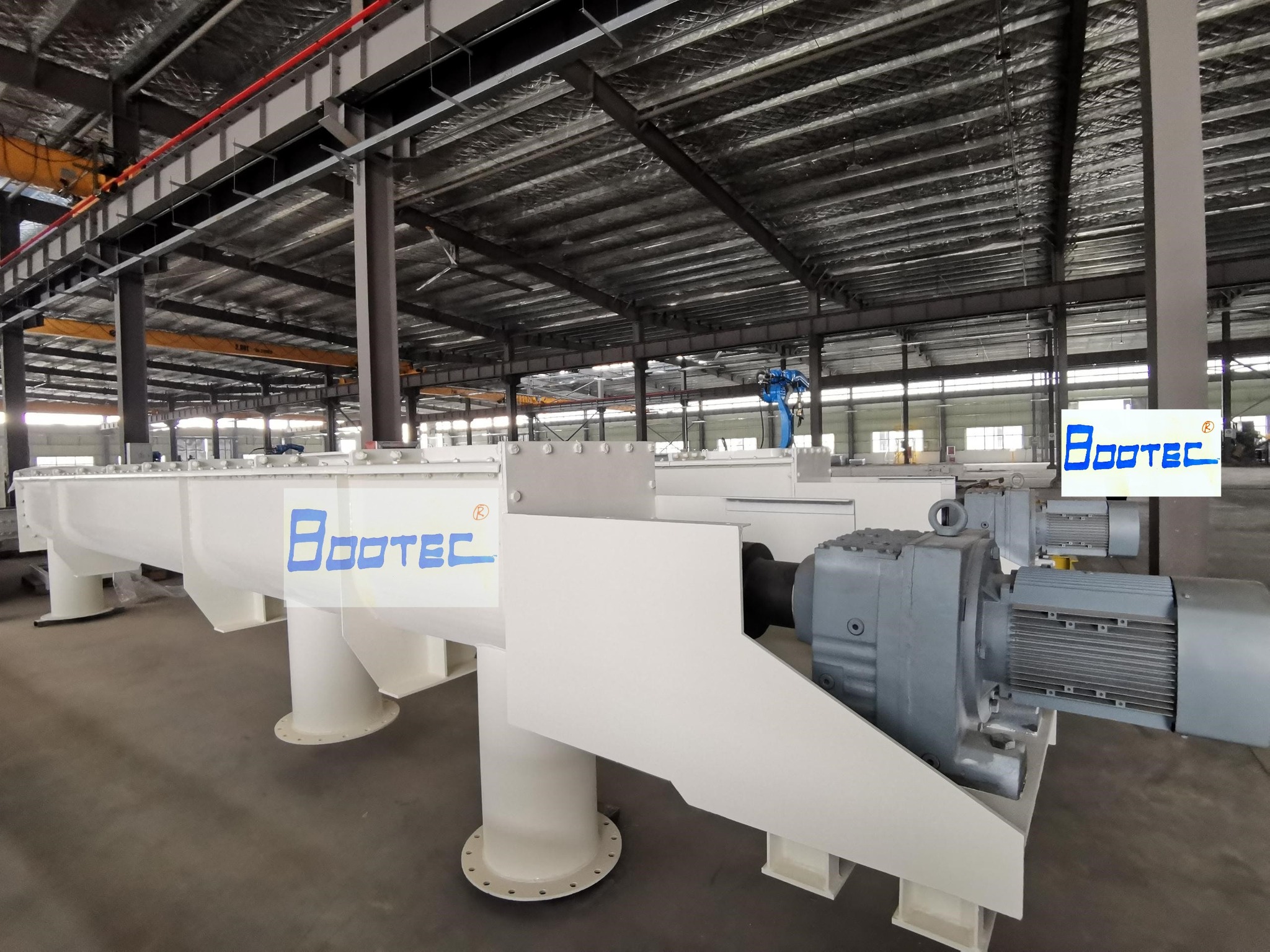Conveyor Screws & Flighting
-

Cement Silo Screw Conveyor
- Screw conveyors are sometimes used for dry bottom ash. The screw mechanism moves the material within an enclosed trough, reducing the risk of material spillage and dust generation.
- Advantages: Screw conveyors are simple, compact, and efficient for conveying both wet and dry bottom ash.
-

Lime/Fly Ash Screw Conveyor | Screw Conveyor for Cement Silo
- Screw conveyors are sometimes used for dry bottom ash. The screw mechanism moves the material within an enclosed trough, reducing the risk of material spillage and dust generation.
- Advantages: Screw conveyors are simple, compact, and efficient for conveying both wet and dry bottom ash.
-

Screw Feeder and Transfer Screw Conveyor for High Temperature Cement Kiln Dust
- Screw conveyors are sometimes used for dry bottom ash. The screw mechanism moves the material within an enclosed trough, reducing the risk of material spillage and dust generation.
- Advantages: Screw conveyors are simple, compact, and efficient for conveying both wet and dry bottom ash.
-

Screw Conveyor Manufacturer – Concrete Screw Conveyor
- Screw conveyors are sometimes used for dry bottom ash. The screw mechanism moves the material within an enclosed trough, reducing the risk of material spillage and dust generation.
- Advantages: Screw conveyors are simple, compact, and efficient for conveying both wet and dry bottom ash.
-

Cement Screw Conveyor-Special Equipment for Cement
- Screw conveyors are sometimes used for dry bottom ash. The screw mechanism moves the material within an enclosed trough, reducing the risk of material spillage and dust generation.
- Advantages: Screw conveyors are simple, compact, and efficient for conveying both wet and dry bottom ash.
-

Industrial Screw Conveyor – Conveying Equipment
- Screw conveyors are sometimes used for dry bottom ash. The screw mechanism moves the material within an enclosed trough, reducing the risk of material spillage and dust generation.
- Advantages: Screw conveyors are simple, compact, and efficient for conveying both wet and dry bottom ash.
-

Screw Conveyor
- Screw conveyors are sometimes used for dry bottom ash. The screw mechanism moves the material within an enclosed trough, reducing the risk of material spillage and dust generation.
- Advantages: Screw conveyors are simple, compact, and efficient for conveying both wet and dry bottom ash.
-

Cement Screw Conveyor
- Screw conveyors are sometimes used for dry bottom ash. The screw mechanism moves the material within an enclosed trough, reducing the risk of material spillage and dust generation.
- Advantages: Screw conveyors are simple, compact, and efficient for conveying both wet and dry bottom ash.
-

TUBULAR CEMENT – FLYASH SCREWCONVEYORS
- Screw conveyors are sometimes used for dry bottom ash. The screw mechanism moves the material within an enclosed trough, reducing the risk of material spillage and dust generation.
- Advantages: Screw conveyors are simple, compact, and efficient for conveying both wet and dry bottom ash.
-

Supply Of Cement Mill Screw Conveyor A315x10m
- Screw conveyors are sometimes used for dry bottom ash. The screw mechanism moves the material within an enclosed trough, reducing the risk of material spillage and dust generation.
- Advantages: Screw conveyors are simple, compact, and efficient for conveying both wet and dry bottom ash.
-

Cement and Aggregates Screw Conveyors
- Screw conveyors are sometimes used for dry bottom ash. The screw mechanism moves the material within an enclosed trough, reducing the risk of material spillage and dust generation.
- Advantages: Screw conveyors are simple, compact, and efficient for conveying both wet and dry bottom ash.
-

Shaftless Screw Conveyor for Sludge Conveying
Custom-designed conveyors and conveyor systems are tailored material handling solutions developed to meet the specific requirements of industries such as manufacturing, mining, food processing, pharmaceuticals, energy, and recycling. These systems optimize the movement, storage, and processing of materials, ensuring efficiency, reliability, and cost-effectiveness.

